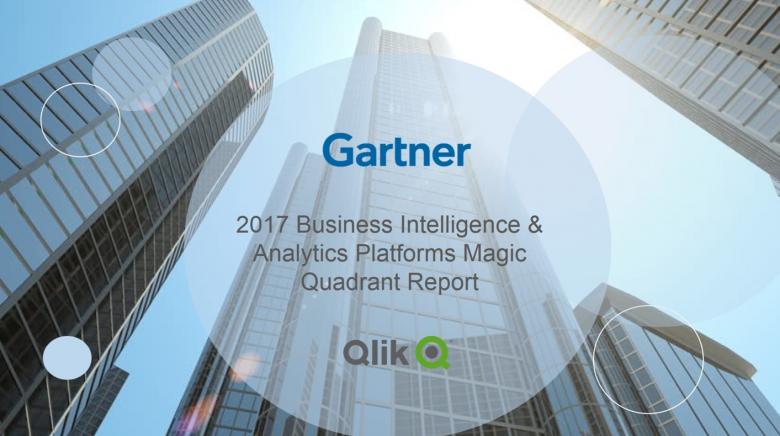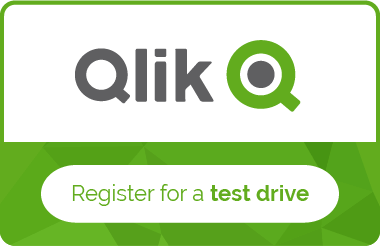
Last week Gartner released the 2017 edition of its "Business Intelligence and Analytics Platforms Magic Quadrant Report," which details the latest developments in business intelligence and compares BI platforms in terms of vision and ability to execute on that vision, for those looking to invest in these type of systems.
To download a complimentary copy of Gartner's BI & Analytics Magic Quadrant Report click here.
Inside Info started delivering Qlik solutions to Australia over fourteen years ago. We did so because of a firm belief that Qlik's strategy, product vision and capabilities provided a well-needed alternative to traditional BI platforms. Qlik defined Data Discovery, led the decentralization of traditional BI to empower business users and established true, governed, self-serve analytics that can be delivered quickly. There are a few reasons why Qlik remains only one of three BI Leaders in Gartner's recent BI Magic Quadrant report.
A leading role in the BI industry
First and foremost, it's clear from Gartner's business intelligence research that Qlik is one of the leading players on the BI playing field, and it's been in that role for a long time. The Magic Quadrant listed Qlik as one of the industry leaders for a record-setting seventh year in a row. It also named Qlik Sense as one of the fastest growing products in the market, with a strong 2016 recording revenues that exceeded all expectations.
Customer experience
Gartner positioned Qlik in the Leaders Quadrant which was "driven by a robust product, an above-average customer experience and a strong global partner network." Breadth of product capability has always been a strength of Qlik and continues to be according to Gartner. As has, user enablement. Qlik's modern BI architecture makes it simple for business users to develop their own BI applications in a governed, data discovery process, without requiring assistance from IT developers, usually needed with other platforms. According to Gartner, "Qlik's ease of use for consumers and its visually appealing dashboards have proven to be product differentiators."
While in the recent BARC BI survey (the world's largest independent survey of BI users), Qlik rated #1 in customer satisfaction and customer experience, so Gartner's Magic Quadrant should also be considered in light of BARC's results.
Smart data discovery
Qlik pioneered Data Discovery BI. Qlik's associative engine (QIX) is the driving force behind Qlik applications. Not only does Qlik support integration with best-in-class natural language processing capabilities, advanced predictive analytics and enables an immersive experience including virtual reality integration through Qlik's open APIs, but the native capabilities of the associative engine and open architecture are the unique foundation for capabilities not easily replicated. The QIX engine works as people think, it intuitively seeks to understand all the possible associations that exist in user's data, across all their data sources and allows them to freely explore that data, asking questions in any direction without restrictions or boundaries. That means no predefining data hierarchies or building data cubes. In short it facilitates what many investments in neural networks are striving to achieve. It enables a unique search experience, associative data prep and profiling, data enrichments, suggestions, labeling, compression, truly smart and adaptive visualisation, and indexing across big data sources. In short it defines 'smart' from data preparation, to finding patterns in data, to sharing and operationalising findings.
Rapid (and scalable) deployment
Some are scared off by the prospect of using BI applications because of the supposedly painstaking transition process and cost involved. Gartner noted that with Qlik, this is not a problem. Qlik has proven to be easy to deploy - and moreover, easy to scale, so you can adjust your use as your business grows in size or scope.
Qlik's scalable, in-memory engine allows lines of business as well as central IT to rapidly mash data from multiple data sources that is then accessible via highly interactive dashboards. While Qlik continues to invest in developing a cloud version of the product for the enterprise, SMB versions are already available.
So what about software cost?
When you look at the Magic Quadrant it always highlights strengths and then weaknesses for each vendor. Interestingly, Gartner indicated that Qlik's cost of software as a potential barrier. It's important to look at Total Cost of Ownership (TCO) though, not just licensing. Qlik has one of the best TCO's in the business, according to Gartner in its BI Platform Ownership Cost research. While BARC's BI Survey in October 2016 rated Qlik #1 also in Project Success and Business Value among large international BI vendors (this was a survey of nearly 3,000 end-users). Almost 70% of a BI project's TCO is not found in the license costs but in deployment, infrastructure and support. For the other Leaders in the Quadrant there are several independencies, implementation costs or you simply need to buy additional tools to get the same features.
Supported by a strong Qlik partner
Whether a Qlik client feels supported or not has a lot to do with the relationship and abilities of the Partner they choose to work with. So don't underestimate this. Inside Info as I mentioned launched QlikView in Australia in 2003 as the Master Reseller and then has continued as the longest standing top level Elite Qlik Partner, having won Partner of the Year for many years as well. With over 100 Qlik reference sites, we measure our success through the quality of our people, the relationships they create and the impact we have on our client's business.
To read more about Gartner’s report, download a complimentary version of Gartner's 2017 Business Intelligence and Analytics Platforms Magic Quadrant below.




